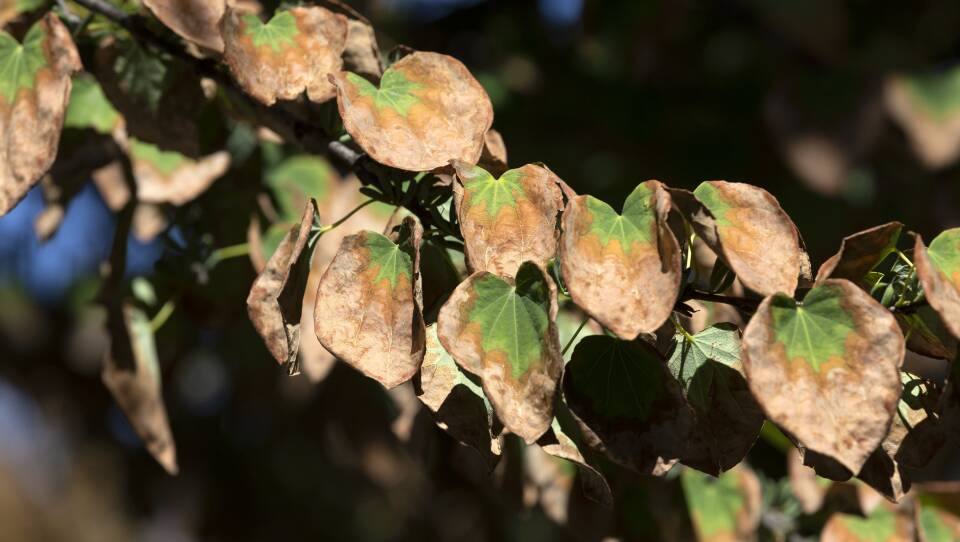Meteorologist Dave Epstein is our go-to person for pressing weather questions on everything from winter blizzards to summer droughts. He’s also a horticulturist, meaning he’s an expert on anything that grows leaves and flowers. GBH's Morning Edition asked you, our audience, for your weather and gardening questions to have Dave answer on the air. This transcript has been edited for clarity.
Have a gardening or weather question for meteorologist Dave Epstein? Tweet him @GrowingWisdom, email us at thewakeup@wgbh.org, or text 617-300-2008.
Our two maples on the front lawn are already losing dozens of increasingly brown leaves. Are those trees in danger? How should we care for them, when we can at best water twice a week? – Patrice
First, let's discuss why trees lose their leaves.
“What they're doing is they're protecting themselves,” Epstein said. “Leaves are where the tree loses its water through transpiration. The backs of the leaves have stomata — you might remember from biology [class] — and those little holes kind of push out the moisture.”
If a tree is healthy, Epstein said, it should be fine next year even if it's losing leaves now.
And to help the tree get the most out of each watering, Epstein suggested draping an irrigation hose not directly around the trunk, but further away under the branches. The circumference of the branches is likely a good indication of where the roots are.
“Let it trickle several hours and that's what will give the tree some water,” Epstein said.
Due to lack of rain, our boxwood shrubs, kousa dogwood and another large tree (not sure what type) are in tough shape with many brown leaves. Do they have a chance of surviving or are they possibly too far gone to recover? – Sue in Topsfield
Though it’s hard to play tree doctor without making a house call, Epstein had some advice.
“I think we are going to see dieback,” he said. “You may see some branches on a tree die, or you may see a whole tree die. I have lost some of my dogwoods.”
Epstein said his azaleas have also had a hard time. But do not despair, he said.
“Look at it as an opportunity to go to a nursery and buy something new,” Epstein said. “Think about what’s drought-tolerant and native.”
My husband and niece, both of Metrowest, have abundant Mexican flower plants attracting bees and butterflies. They sent seeds to [my] sister-in-law in Central Maine, a skilled gardener, but so far she has lots of leaves but not one flower. Any idea why? – Connie in Natick
It could be that the plant needs to be more mature, or that it was not a good fit for the soil it was planted in. But, at risk of getting a little philosophical, part of gardening is recognizing that plants, like all living things, need different conditions in order to thrive.
“Sometimes things that do well in one area just don't do well in another,” Epstein said. “On your own property, you could have a hydrangea that does really well in the south side and really poorly on the north side. The answer is I don't know. And that's OK.”








